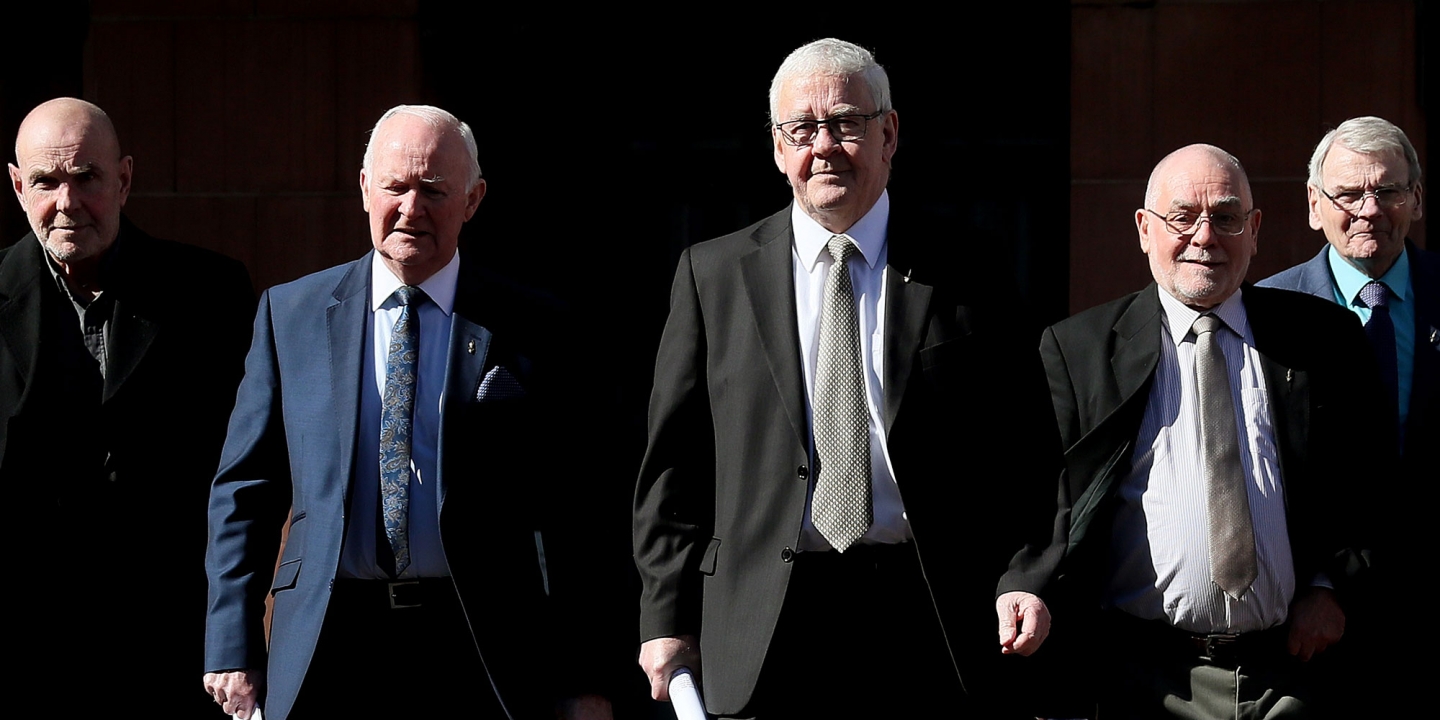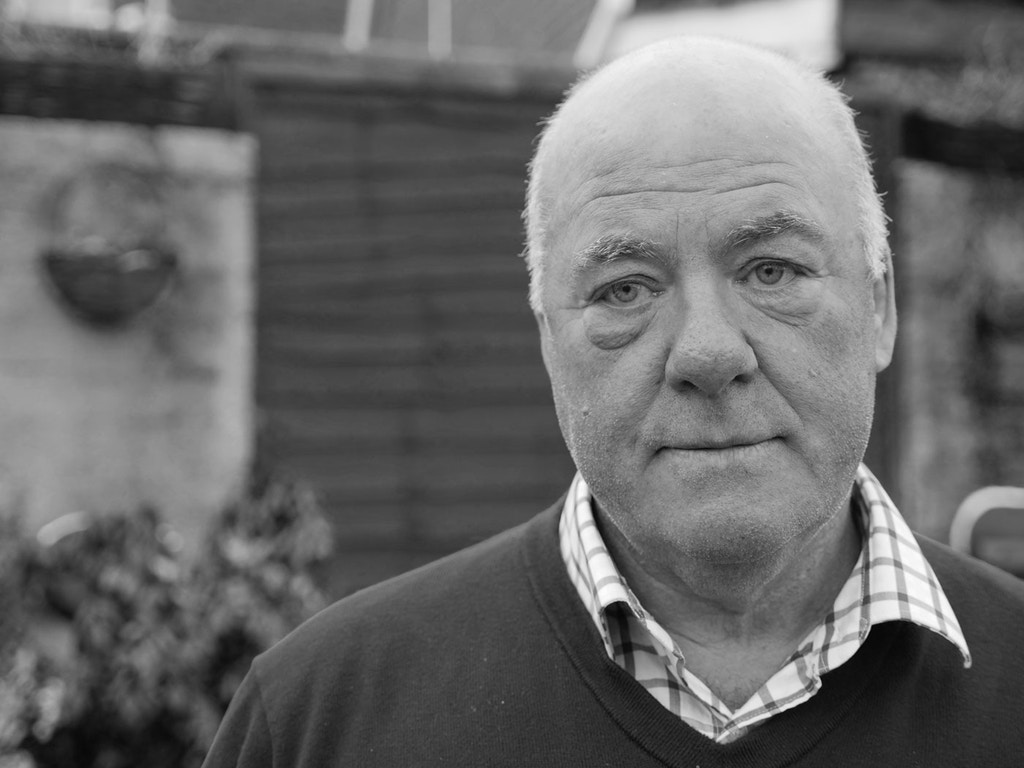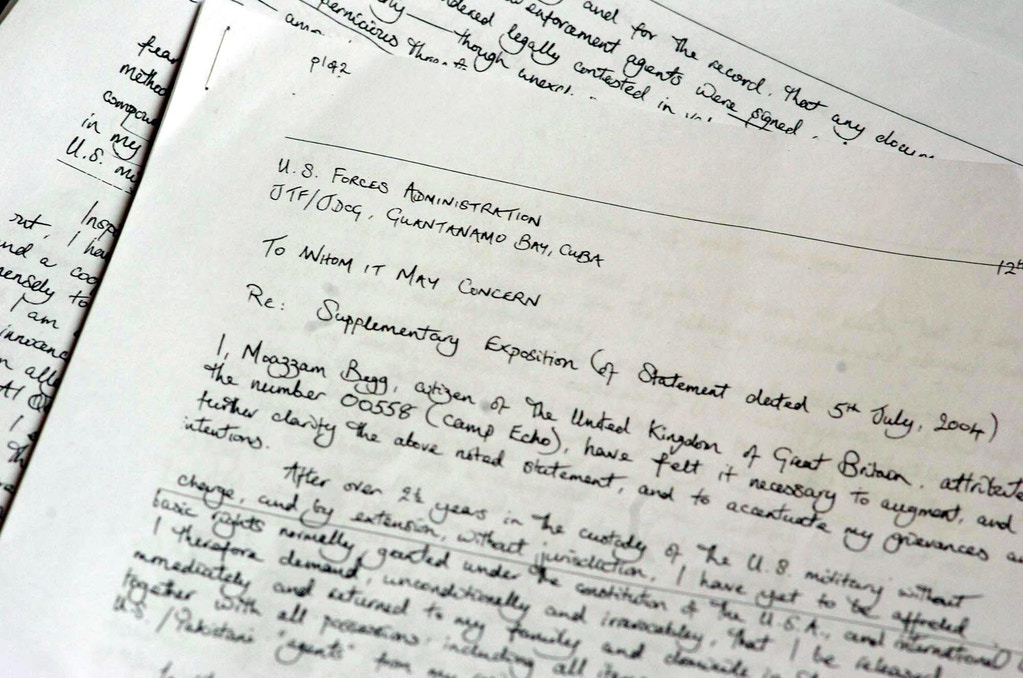From Belfast to Guantánamo: the Alleged Torture of Northern Ireland’s “Hooded Men”
Summer Eldemire, The intercept,
March 22 2018
Auld, it began at a house party.
 |
|
Five of
the “Hooded Men,” who were kept in hoods interned in Northern Ireland in 1971. Francie McGuigan, center, with, from left, Patrick McNally, Liam Shannon, Davy Rodgers, and Brian Turley, pictured in Belfast after the European Court of Human Rights delivered its judgment on their treatment on Tuesday, March 20, 2018. |
On August
9, 1971, while he and his friends drank pints of beer and danced to the Rolling
Stones in their nationalist neighborhood of West Belfast, the government of
Northern Ireland and the British Army launched “Operation Demetrius.” Auld
strolled back to his parents’ house around 3:30 a.m. and thought it was odd
that the lights were still on. He found the door already open, and a man with a
rifle waiting for him on the other side. Soldiers jumped out from the bushes
and shoved him inside.
memory of that evening remains sharp because of what followed: He and 13 other
Irish Catholics were subjected to treatment that on Tuesday the European Court
of Human Rights declared
“inhumane and degrading,” but rejected to revise as legally torture. The
government took the men to a secret detention facility and used them as guinea
pigs to perfect what would later be called the “Five Techniques.” The court had
originally ruled in 1978 that the treatment was not severe or cruel enough to
be classified as torture.
the Irish government appealed to have the case revised after an investigation
uncovered that high cabinet British government officials had authorized the
detainment and hid evidence from the court showing the treatment’s long-lasting
effects. An all-star legal team, including Amal Clooney, represented the men.
the British government banned the use of the Five Techniques in 1972, the
country’s military would go on to use them until at least 2003, when they
resulted in the death
of Baha Mousa, an Iraqi civilian detainee. The U.S. also adopted and fine-tuned
the same methods for use after the September 11, 2001 attacks. The Bush
administration cited the European court’s 1978 verdict in defense of its
so-called enhanced interrogation techniques during the war on terror.
Similarly, the Israeli government used the verdict to defend itself against
accusations of torturing Palestinian detainees. The fate of the 14 Irishmen –
who became known as the “Hooded Men” because their heads were hooded through
their interrogations – had international ramifications.
the men – Sean McKenna, Michael Montgomery, Patrick Shivers, and Gerry McKerr –
are not alive to see the latest ruling in the case. But it was a disappointing
day for the 10 surviving members of the group – Jim Auld, Kevin Hannaway,
Francis McGuigan, Patrick J. McClean, Michael J. Donnelly, Davy Rodgers, Liam
Shannon, Patrick McNally, Brian Turley, and Joseph Clarke – who had hoped that
the court would declare they were tortured.
executive director of Amnesty International Ireland, Colm O’Gorman, described
the ruling as “regrettable.” The judges focused on a narrow legal technicality,
he said, rather than addressing the substance of the torture claims. Because
the case was a request to revise an earlier judgment and not a fresh case, the
court debated whether the new evidence would have impacted the original 1978
decision, not what it would mean in today’s society. “We are quite confident
what was done to these men would be deemed as torture by the court in today’s
terms if this case were heard afresh,“ said O’Gorman.
Teggart, Amnesty’s Northern Ireland campaign manager, said the court had
“missed a vital opportunity to put right a historic wrong.“ She added: “The
‘Hooded Men’ have been denied justice for too long.“
one final option for the men in the European Court of Human Rights. They could
request that the case be submitted to the court’s Grand Chamber. Case
coordinator Jim McIlmurray, who brought the men together in 2011 for the first
time in 40 years, said they were ready to go on to the next step and would be
pursuing all avenues. The group is also pursuing a case through the court of
appeals in Belfast for an independent inquiry into the events of 1971.
 |
| Jim Auld pictured at his home in Belfast on March 15, 2018. Photo: Rebecca Blandón |
As a
teenager, Auld had split his time between chasing girls and demonstrating in
the marches of the civil rights movement, as the minority Catholic group in
Northern Ireland fought back against discrimination. It was one of those
protests that, in October 1968, ended in riots – and sparked the 30-year
conflict known as the “Troubles.”
Ireland is at the tip of Ireland, occupying about one-sixth of its landmass.
When its southern neighbor broke away from England in 1922, Northern Ireland
stayed under British governance. Afterward, the region became fiercely divided
between Protestant unionists who supported staying under British rule and
minority Catholic nationalists, like Auld and his family, who felt they
belonged to the Irish Republic.
remembers the Troubles percolating in the months beforehand. Every night, the
television had shown police suppressing rioters. But it all felt distant until
the moment he says he saw armed Protestant paramilitary gangs, which
sometimes included police and military, charging into his neighborhood and
burning down houses. During riots in 1969, many houses — mostly Catholic — were
burned, and thousands of Catholics were forced out of their homes.
for an interview with The Intercept and recounted his memories in detail. The
European Court of Human Rights has acknowledged Auld’s testimony and the
government of Northern Ireland has not denied his version of events. The
Northern Ireland office of the U.K. government did not respond to Auld’s
allegations, but a spokesperson stated, “We continue to condemn unreservedly
the use of torture or inhumane treatment.”
authorities arrested Auld on August 9, 1971, he says he immediately started
taking his jacket off, so his parents could bear witness that he had no bruises
before the soldiers arrested him. The authorities were looking for anyone
suspected of association with the Irish Republican Army, better known as the
IRA, a paramilitary group proscribed as a terrorist organization in
the U.S. and the U.K. In response to escalating violence, the government
passed a law enabling authorities to indefinitely detain suspected terrorists
without trial.
a British military captain assured him, “While you’re with me Mr. Auld, I
guarantee nothing will happen.” The soldiers loaded him into the back of a
truck and took him to a local detention center. When they offloaded him, he
says the captain told him, “You’re no longer under my custody,” and a guard hit
Auld over the back of the head with a rifle butt.
government detained about 350 men, mostly Catholics, between August 9 and 10,
but selected Auld as one of only 14 for “deep interrogation” in a secret
facility in Ballykelly, a lonesome village in the far north of the country.
Before being taken away, Auld glimpsed his friends Kevin Hannaway, Francis
McGuigan, and Joe Clarke. He says one of the soldiers gave him a cigarette and
told him, “Here, you poor bastard. You’re going to need that.” That’s when he
realized that things were serious. The guards placed a hood over his head.
“A human
being looked at me and approved me to be tortured.”
of weeks before his arrest, Auld had picked up a Newsweek magazine at the
dentist’s office. A picture of an American helicopter in Vietnam stretched
across two pages and “circled in the middle was a figure that had just been
thrown out … to be killed,” said Auld. This is what he thought of when he heard
the sound of a helicopter and the guards loaded him onto it. The next thing
he’d felt was a boot on his back. He didn’t have time to see his life flash
before his eyes; he landed about 6 feet below, the helicopter had been
hovering just off the ground.
arrived at the Ballykelly facility, a doctor had examined Auld and ruled him
fit for interrogation. To this day, Auld is still in disbelief. “A human being
looked at me and approved me to be tortured.” Part of Tuesday’s appeal hinged
on documentation that a doctor had misled the court by saying that the effects
of the ill treatment were short-lived, all the while knowing their long-lasting
impact. The court did not find this evidence convincing. They ruled that even
if the doctor had provided misleading evidence, it could not be said that that
would have influenced a finding of torture. They concluded that there was
simply not enough scientific evidence at that time.
Techniques are wall standing (the stress position), hooding, subjection to
noise, deprivation of sleep, and deprivation of food and drink. The guards had
placed Auld standing with his hands against the wall with his fingers spread.
When he moved, they beat him. When he fell, they lifted him and put him back
against the wall. After a while, he didn’t mind the beatings, as they “were
allowing your blood to circulate and giving you a relief from that heavy
numbness,” he said. This went on for at least seven days and nights.
guards had removed the hood only once during his detainment. A bright light was
shined into his eyes, and a voice repeatedly asked, “Who do you know in the
IRA?” Auld had said he didn’t know anyone. “It was like something out of a
movie,” he recalled. He told them names of two famous republican paramilitary
leaders who had appeared regularly on the television. “Trust me, if I had known
anyone, I would have told them,” he said.
clear why Auld had been selected out of the 350 men initially rounded up.
It is possible that geography played a factor. At first, there were only 12 men
taken in for interrogation, four from each of the three provinces, according
to the 1974 book called “The Guineapigs.” Questioned about whether he had
any obvious links to the IRA, Auld responds that even if he had, no human
should have been treated the way he was. The government never charged him with
a crime.
passed in and out of consciousness. He had hallucinated. He had no access to a
toilet. They fed him only once, but his mouth was too dry to eat, having not
drunk water for three days. In the background, there had been a constant
noise that he thought would drive him mad.
didn’t think the government would possibly allow him out alive. During one of
the 10 or 15 times he remembers collapsing during his interrogations, he
identified a heating pipe running along the bottom of the wall. He had tried to
throw his head against it to kill himself. When he would regain consciousness,
he bawled upon realizing that his worst nightmare had come true: He
was still alive.
guards released Auld from Ballykelly, they had detained him in prison for nine
months before admitting him to a mental hospital for “blackouts,” a likely
symptom of post-traumatic stress. “I’d start thinking about what happened and
my brain would just shut off,” said Auld. After a few weeks, he realized he
could check himself out. He says he signed the papers, walked out the door, and
took the bus home to his astonished family.
a difficult time adjusting back to life afterward. He couldn’t settle in a job.
He went back to a mental hospital. Auld had received a payment of about £16,000
($22,600) after a settlement in the courts in Belfast. He bought a blue sports
car. He found satisfaction working in conflict resolution with youth who had
experienced violence because he felt he had “an empathy.”
idea that the government of Ireland, in 1976, had taken a case to the European
Commision of Human Rights. He says no one had consulted him. Ireland initially
won the case. But two years later, the government of Northern Ireland appealed
it in a higher court, which reversed the ruling.
 |
| A photocopy of a letter from British Guantánamo Bay detainee Moazzam Begg, shown during a press conference in central London in 2004. Photo: Johnny Green/AP |
realized that others had experienced the Five Techniques some 25 years later,
when he heard a talk by Moazzam Begg, a former Guantánamo detainee and outreach
director of Cage, a London-based
organization that campaigns against abuses of counterterrorism powers. Auld
says that he and Begg discussed their respective experiences. Auld had not been
able to speak to anyone before about his ordeal because, as he puts it, “It’s
not great dinner conversation.”
angry when he realized that even though the British government had banned the
techniques in 1972, Begg endured similar treatment while he was at Guantánamo.
This was proof to Auld that the brutal British methods had been exported and
expanded upon.
until 2014 that new evidence would come to light. Documents uncovered by
Irish broadcaster RTE revealed that the British government lied to
the European Court of Human Rights about the severity of the techniques and the
long-term physical and psychological consequences for the victims. The
documents also revealed that the Secretary of Defense, Peter Carrington, had
authorized the interrogation tactics, and that Prime Minister James Callaghan
knew about it.
showing the involvement of ministers in high positions formed a key part of
Ireland’s request to reopen the case. But on Tuesday, the court ruled that the
documents demonstrated nothing new. The court said the original 1978 hearing
had been well aware that the harsh methods had been signed off at a high
level.
ruling was delivered amid a newly reignited debate in the U.S. around the use
of torture, after the Trump administration announced Gina Haspel would be the
new head of the CIA. Haspel previously oversaw
a secret prison in Thailand, where the agency’s officers had used torture
methods such as waterboarding, according to a declassified
report published in 2014. The extent of Haspel’s involvement in the
abusive techniques is not yet known. She will have to have to answer questions
about her role during her Senate confirmation.
that if the court had revised the ruling, it could have set a precedent,
establishing that any use of the Five Techniques after 1978 amounted to
torture. He felt that the judges overseeing the case did not want to deal with
the immense implications that a revision may have caused. He was remarkably
cheery after hearing the news and ready to pursue the case as long as it took
to get justice.
lives in a quiet part of Belfast. He works part-time with a conflict resolution
organization, dissuading paramilitaries like the IRA from using violence in
their informal justice systems. Days before the court’s decision, Auld
says he traveled to the city of Derry to dissuade someone from delivering a
“kneecapping,” the trademark paramilitary punishment of shooting someone in the
knee. On the weekends, he takes his peregrine falcon to the woods to hunt and
find some kind of peace.


